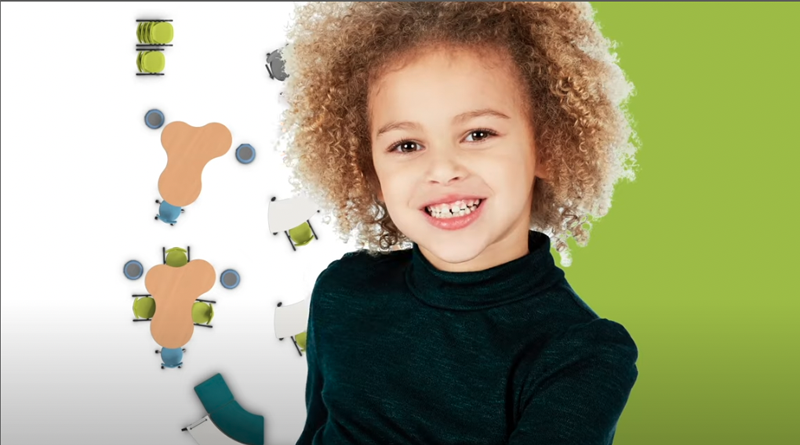How Agile Furniture Supports Student Well-Being in Elementary Schools
By SCN Staff
Flexible spaces maximize the interplay between positive learning outcomes, physical wellness, and self-regulation.
In elementary school, flexible environments improve the quality of interactions between students and students and teachers. Agile furniture can create various spaces and zones within a classroom – this flexibility means more freedom for social integration and movement opportunities. Flexible environments give teachers the needed areas to deliver private actionable feedback, support students’ self-selecting learning locations, and offer multiple modes of formative assessment.
Student-centered learning aims to develop autonomous and independent students.
Agile furniture contributes to individual freedom of choice. The freedom to choose personal and situational comfort sets the stage for developing agency in the learning environment. Agile furniture is paramount for quick autonomous changes. In these environments, students can appropriate the types of spaces and furnishings that best support their learning. When flexible environments are supported by agile furniture, it shifts the learning experience from the teacher to the student.
Well-designed environments that advocate social and emotional well-being promote equity and inclusivity, leading to overall improved learning outcomes.
When teachers cultivate student-centered environments in their classroom, it does not mean kids have free rein to do what they want. It means a structured environment with routines and procedures so all kids can learn. The goal is to holistically marry learners’ academic, social, and emotional needs as they seek answers to the wonders of the world around them.
Teachers who utilize agile spaces foster a community culture by allowing independent work and teamwork through large and small group instruction and reflective, independent learning activities. It means placing students at the center of their own learning environment so they can decide why, what, and how their learning experience and environment will take shape. It is designed for learners to engage in collaborative experiences, so they have multiple opportunities to demonstrate mastery through skills and content. Flexible environments are multidirectional to support the acquisition of learning outcomes and help teachers address any learning losses as needed.
VS America’s agile furniture can be used to create flexible learning environments. In these environments, teachers and students can easily arrange various spaces and zones to allow for increased movement, social integration, and content-based interactions.
Learn more about supporting student well-being in elementary schools in VS’ well-being brochure or in this video. Want to learn about cultivating student well-being in high school spaces? Check out this video.
Learn more about VS America
Learn more about agile furniture that is built to support student and teacher well-being at www.vsamerica.com, or contact VS at https://vsamerica.com/contact.
Editor’s note: This article is designated as Branded Content and School Construction News does not ensure the veracity or accuracy of the information included within.

